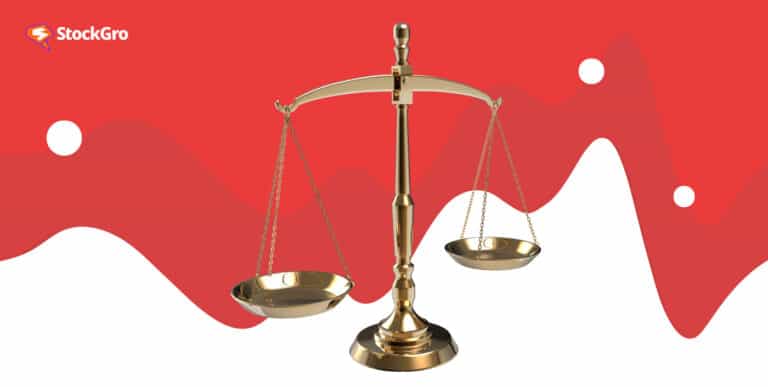
If you’ve ever wondered what shares are or heard someone mention the different types of shares, this guide is just for you. We’ll break down everything you need to know, using simple language and engaging examples, so you can confidently join conversations about this topic. Let’s dive in.
What is meant by a share?
Imagine you have a delicious pie. If you cut that pie into pieces and give one piece to a friend, that piece represents a share of the pie. In the world of business, a share is like that piece of pie.
But instead of pie, it represents a piece of a company. When you own a share, you own a part of that company. It’s that simple!
What are shares in a company?
Shares in a company, commonly referred to as stocks or equities, signify fractional ownership in that corporation. Viewed as financial assets, these shares provide investors with a stake in the company’s future performance and underlying value.
When a company decides to issue shares to the public, it aims to raise capital that can be channelled into various avenues like business expansion, operational improvements, or strategic acquisitions.
In return for their investment, shareholders gain the right to a share of the company’s profits and may also have a claim on its assets.
You may also like: A guide to stock dividend
Features of shares
Shares come with a set of characteristics. Here are some of the main features:
- Ownership: Having shares means you have a slice of the company. The more shares you have, the bigger your slice.
- Dividends: Companies sometimes distribute a portion of their earnings to shareholders. This payout is called a dividend.
- Voting rights: Shareholders often get a say in important company decisions, like electing board members.
- Transferability: Shares can be sold or bought. If you decide you no longer want your piece of the company pie, you can sell it to someone else.
Getting to know various types of shares
Broadly, there are two main types of shares – equity shares and preference shares. Let’s understand each one.
- Equity shares meaning: Equity shares, often simply called stocks, represent the core ownership of a company. If you hold equity shares, you are a part-owner of the company. Here are some things to remember:
- They offer dividends, but these are not fixed. They depend on the company’s performance.
- Equity shareholders have voting rights in company decisions.
- If the company closes, equity shareholders get their share of whatever assets remain after all debts are paid. But they’re last in line, so there might not be much left.
- Preference shares: Preference shares are a bit different. Their name comes from the fact that they get preference in certain situations. Here’s what you need to know:
- They receive dividends before equity shareholders.
- Their dividends are usually fixed or set at a particular rate.
- If the company closes, preference shareholders get their share of assets before equity shareholders.
- However, they typically don’t have voting rights.
Also Read: Unlocking the power of preference shares
What are shares in terms of share capital?
Share capital refers to the money a company raises by issuing shares. For example, if a company issues 1000 shares at $10 each, its share capital is $10,000. Share capital can be of different types, based on the types of shares issued:
- Equity share capital: Money raised from issuing equity shares.
- Preference share capital: Money raised from issuing preference shares.
Sometimes, companies might also issue “right shares.” These are special shares offered to existing shareholders, allowing them to buy more shares, usually at a discounted price.
Equity shares example
To help understand this better, consider a fictional company called “GreenTech.” If GreenTech decides to raise money to fund a new project, they might issue 100 equity shares at Rs. 50 each. This means their equity share capital would be Rs. 5000.
Later, if they decide to offer right shares, they might give their existing shareholders the chance to buy additional shares at a discounted rate of Rs. 40 each.
Types of share in the stock market
When diving into the intricacies of stock market investment, you’ll encounter a rich tapestry of share types, each with unique characteristics and advantages. Let’s delve into a concise yet enlightening summary of these:
Common shares
Common shares form the backbone of equity ownership in a company. As a common shareholder, you hold a stake in the firm’s assets and profits. Additionally, these shares often come with voting rights, granting you a say in pivotal company decisions.
Preferred shares
Preferred shares are geared towards investors seeking a more predictable income, usually through fixed dividend payments. What sets them apart is their priority status; in the event of dividend distributions or company liquidation, preferred shareholders are first in line.
Treasury shares
Treasury shares are unique because they are repurchased and held by the issuing company. These shares serve as a reserve pool of sorts, which the company can re-issue to the public when capital infusion is needed. Notably, they neither offer voting rights nor yield dividends.
Voting vs. non-voting shares
While voting shares empower you with a voice in crucial company matters, non-voting shares come without this privilege. Typically, non-voting shares are priced lower due to their limited rights and benefits.
Class-A and Class-B shares
Some companies diversify their share structure by offering Class A and Class B shares. These classes may differ significantly in terms of voting power or dividend distribution, allowing you to choose based on your investment priorities.
Growth and value shares
Growth shares are the darlings of the future, expected to experience exponential growth and earnings. Value shares, on the other hand, are the hidden gems—often undervalued but with a promising outlook for long-term returns.
By understanding these varied types of shares, you can more effectively tailor your investment strategy to align with your financial goals and risk tolerance.
Examples of shares in everyday life
You encounter the world of shares more often than you think! For instance:
- Popular companies like Apple, Google, and Amazon have shares that are traded on stock exchanges.
- When you hear in the news that a company’s stock price has increased, it means its shares’ value has increased.
- Companies sometimes split their stock, meaning they increase the number of shares while proportionally decreasing the price of each share. This doesn’t change the company’s overall value, but it can make shares more affordable to individual investors.
Also Read: Your comprehensive guide to successful share market investing
How can you invest in shares?
If all this talk about shares has you intrigued and you’re wondering how to start, here are some steps:
- Research: Begin by understanding the companies you’re interested in. Look into their performance, plans, and overall industry health.
- Start small: If you’re new, consider starting with a small investment to get a feel for the market.
- Consult: Talk to financial experts or use investment platforms that offer advice and insights.
- Stay informed: The world of shares is dynamic. Keep yourself updated with the latest news and trends.
Wrapping up
From our pie analogy at the beginning to diving into the nuances of share capital, we’ve taken a comprehensive journey to understand the world of shares.
Understanding the essence of “what is share” and exploring the “types of shares” provides a solid foundation for anyone interested in the business and financial domain.
Remember, the world of shares is as much about knowledge as it is about intuition. As you keep learning and engaging with the market, you’ll develop insights that will guide your journey.
Whether you choose to invest or simply appreciate the intricacies of the business world, there’s always more to discover and learn. Happy exploring!
Want to master stock trading? Learn from SEBI-registered experts, access real-time market insights, and practice risk-free with virtual trading. Start learning investment strategies app today!
